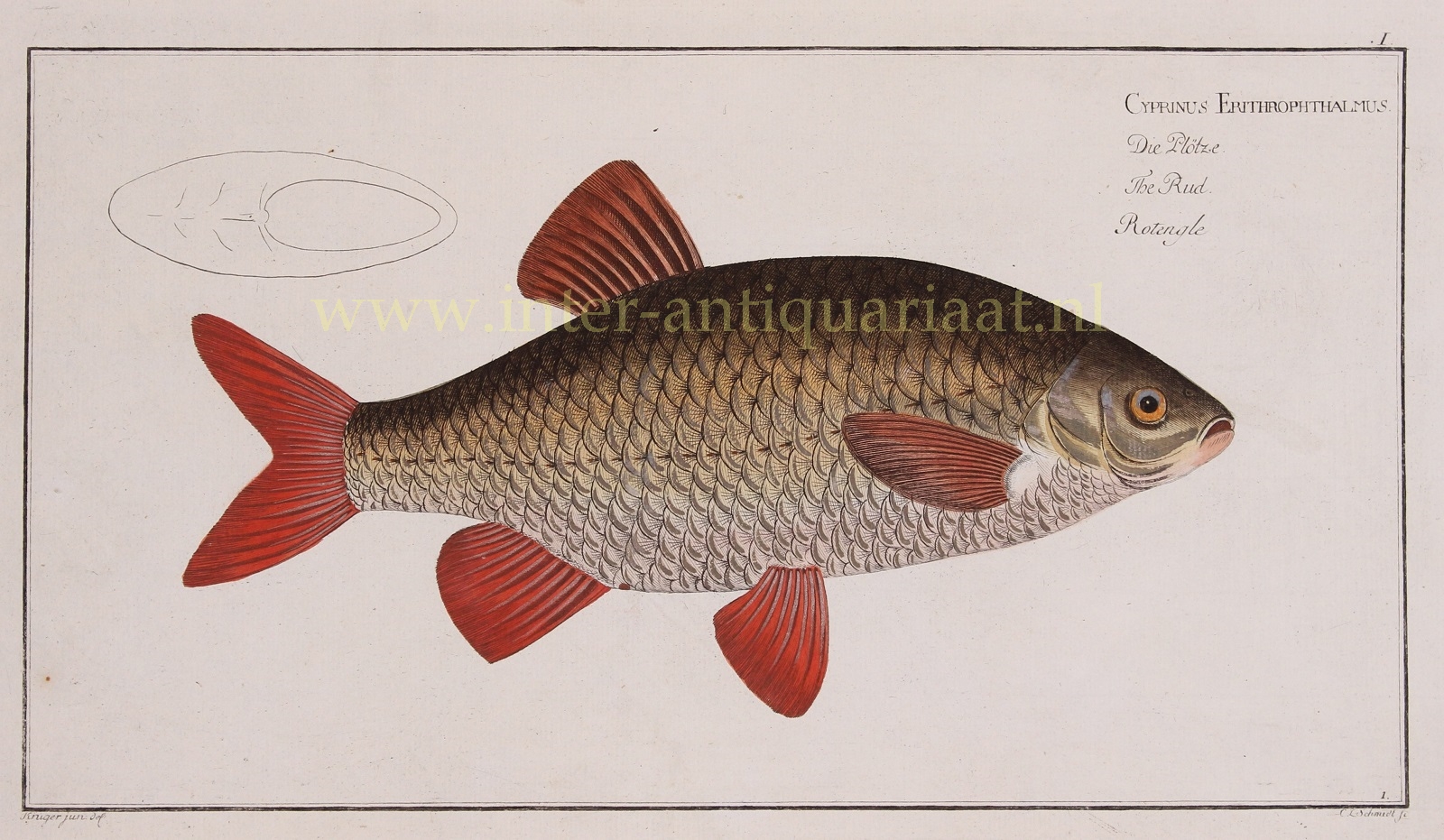THE COMMON RUDD
“Cyprinus erithrophtalmus / Die Plötze / The Rud / Rotengle” (plate 70), copper engraving made by Ludwig Schmidt after the drawing of Krüger jr, for Markus Elieser Bloch‘s “Allgemeine Naturgeschichte der Fische” published in Berlin between 1782 and 1795. With original hand colouring. Size: 19 x 38 cm.
This species is very similar to the roach, with which it can be easily confused. It can be identified by the yellow eye colour. The eye of the roach has a big red spot above the pupil, that can be more or less conspicuous. The rudd has an upturned mouth allowing it to feed easily at the top of the water. The placement of the dorsal fin is more to the rear which is even visible in very young fish. There are normally only one or two scales between the tip of the pelvic fins and the anal fins, while on the roach there are five.
Rudd prefer clear waters rich in plants. They also feed on aquatic vegetation when the temperature exceeds 18 °C. They hunt for living prey in the upper levels.
It prefers shallow weedy areas in lakes and river backwaters, where mature females lay up to 200,000 eggs on submerged vegetation. Young rudd eat zooplankton, aquatic insects, and occasionally other small fish. Mature rudd eat mostly aquatic vegetation. The rudd can consume up to 40% of their body weight in vegetation per day, as much as 80% of which is discharged as waste, releasing nutrients into the water column.
Bloch’s labour on the “Allgemeine Naturgeschichte der Fische” occupied a considerable portion of his life, and is considered to have laid the foundations of the science of ichthyology. The publication was encouraged by a large subscription, and it passed rapidly through five editions in German and in French. Bloch made little or no alteration in the systematic arrangement of Peter Artedi and Carl Linnaeus, although he was disposed to introduce into the classification some modifications depending on the structure of the gills. To the number of genera before established, he found it necessary to add nineteen new ones, and he described 276 species new to science, many of them inhabitants of the remotest parts of the ocean, and by the brilliancy of their colours, or the singularity of their forms, as much objects of popular admiration as of scientific curiosity.
Bloch is considered the most important ichthyologist of the 18th century.
Price: SOLD


